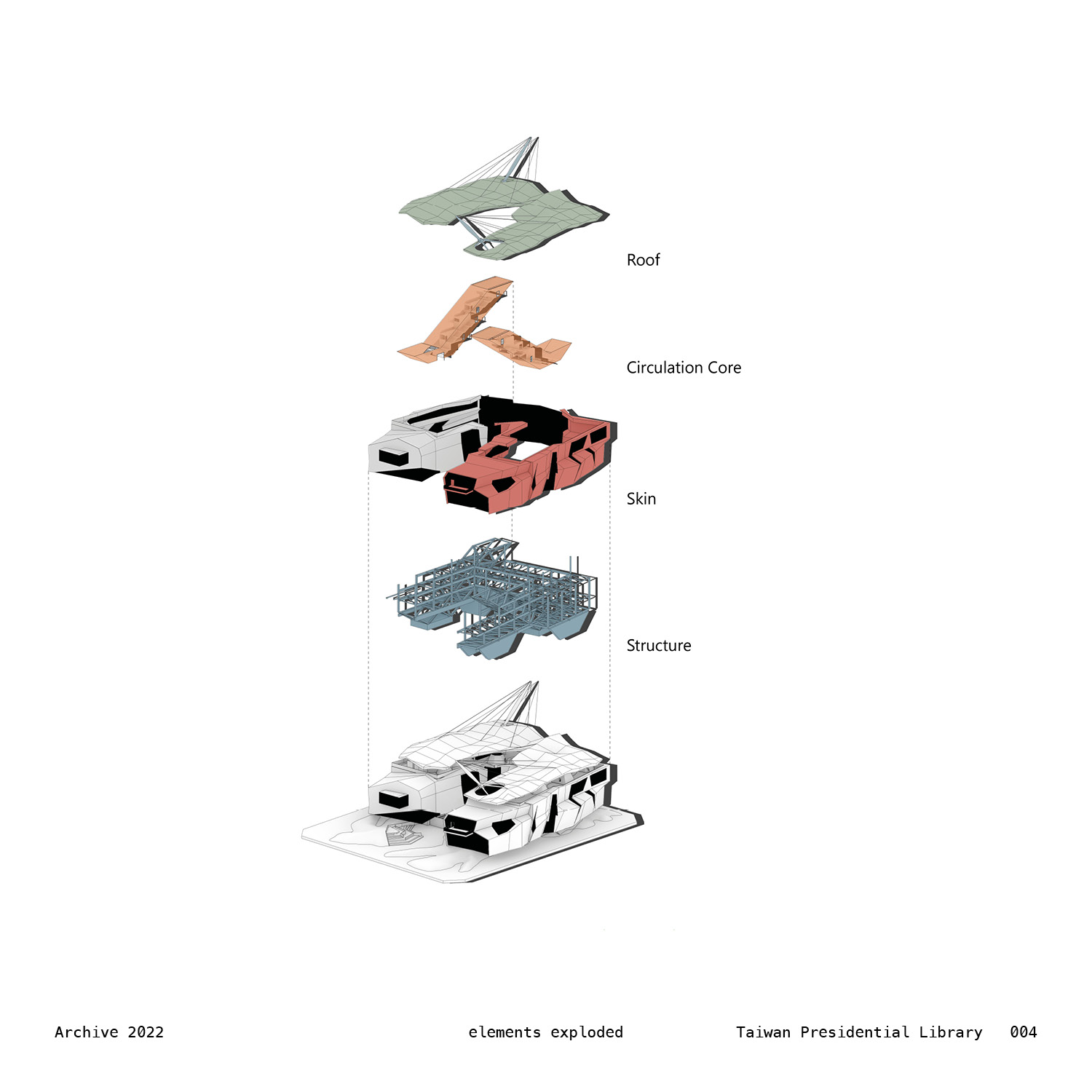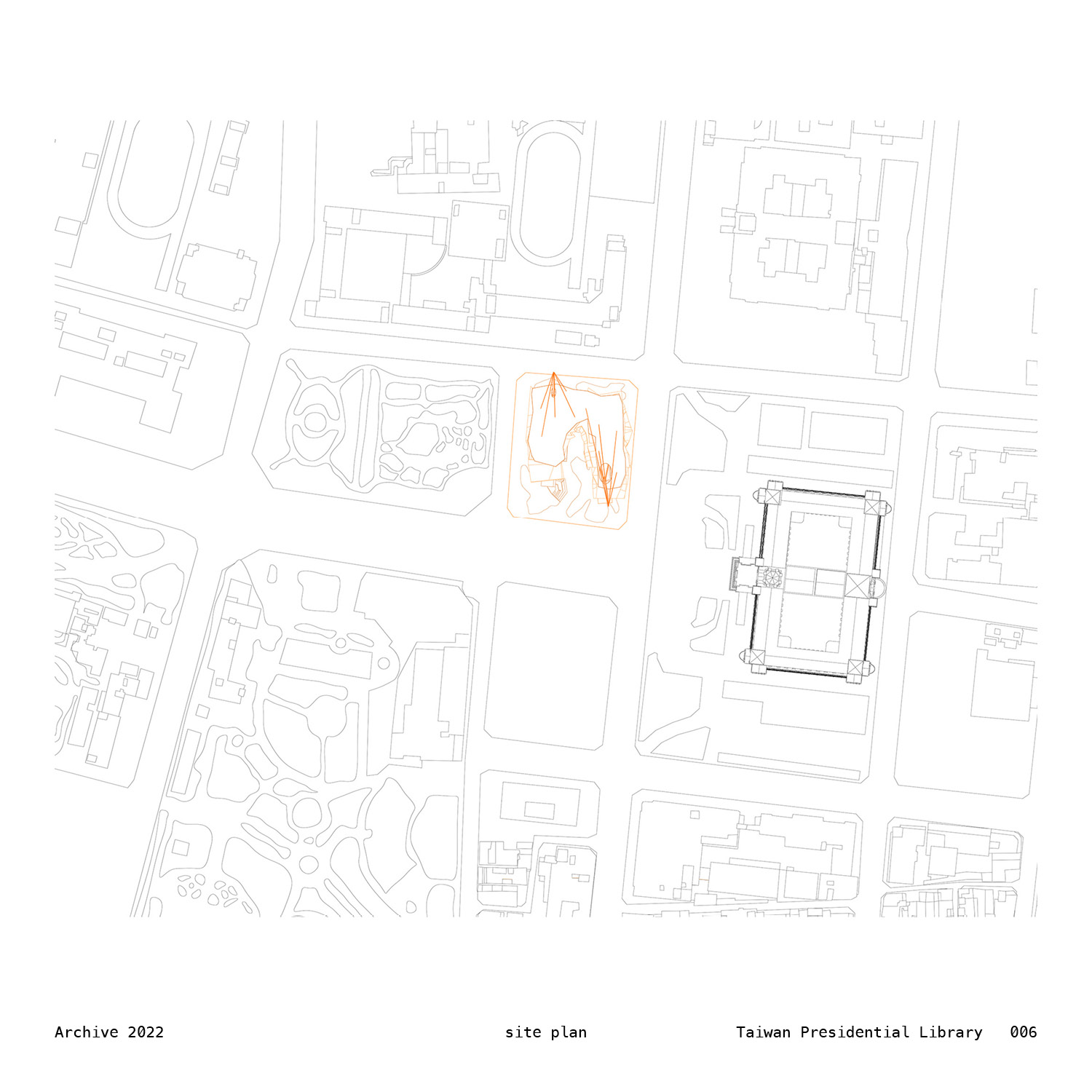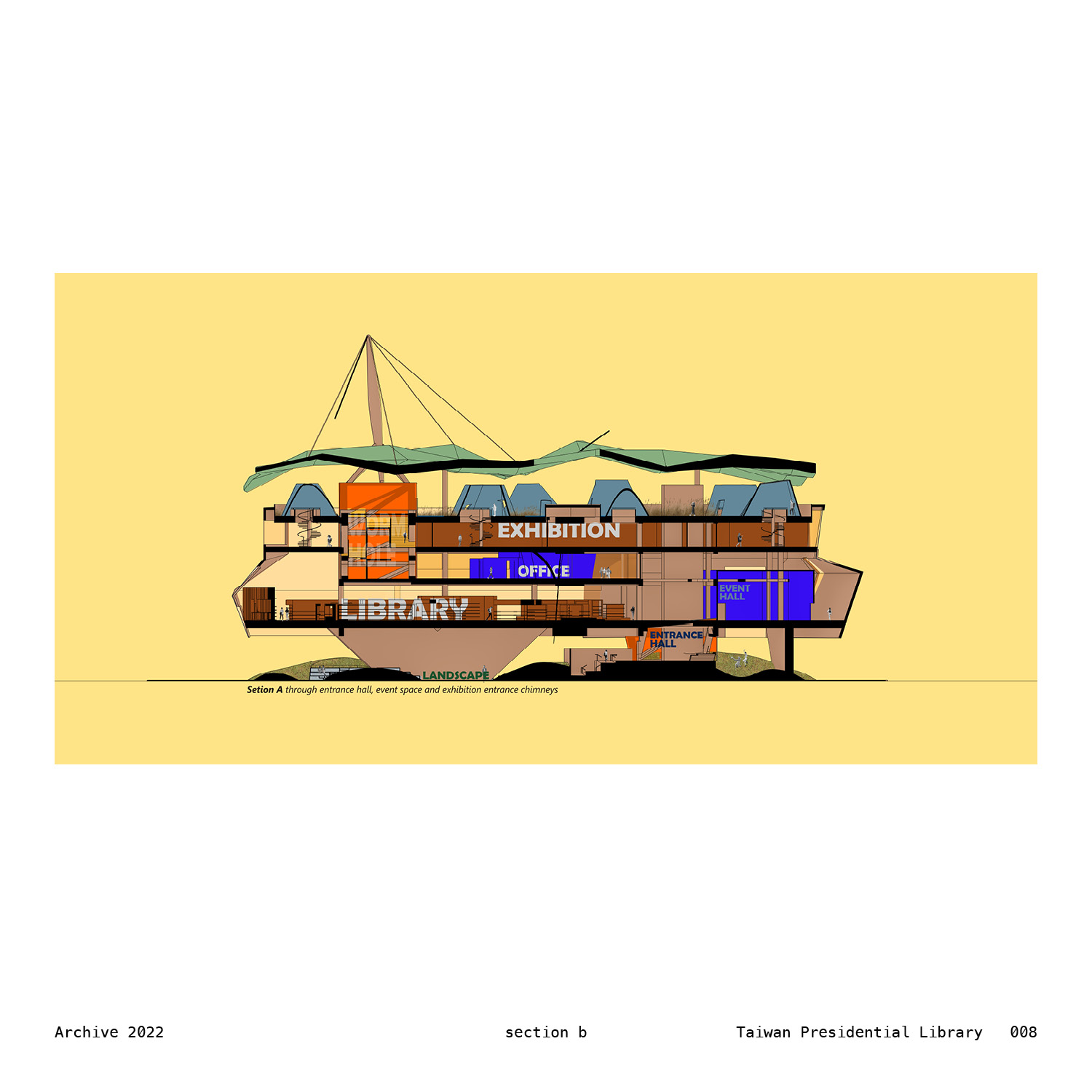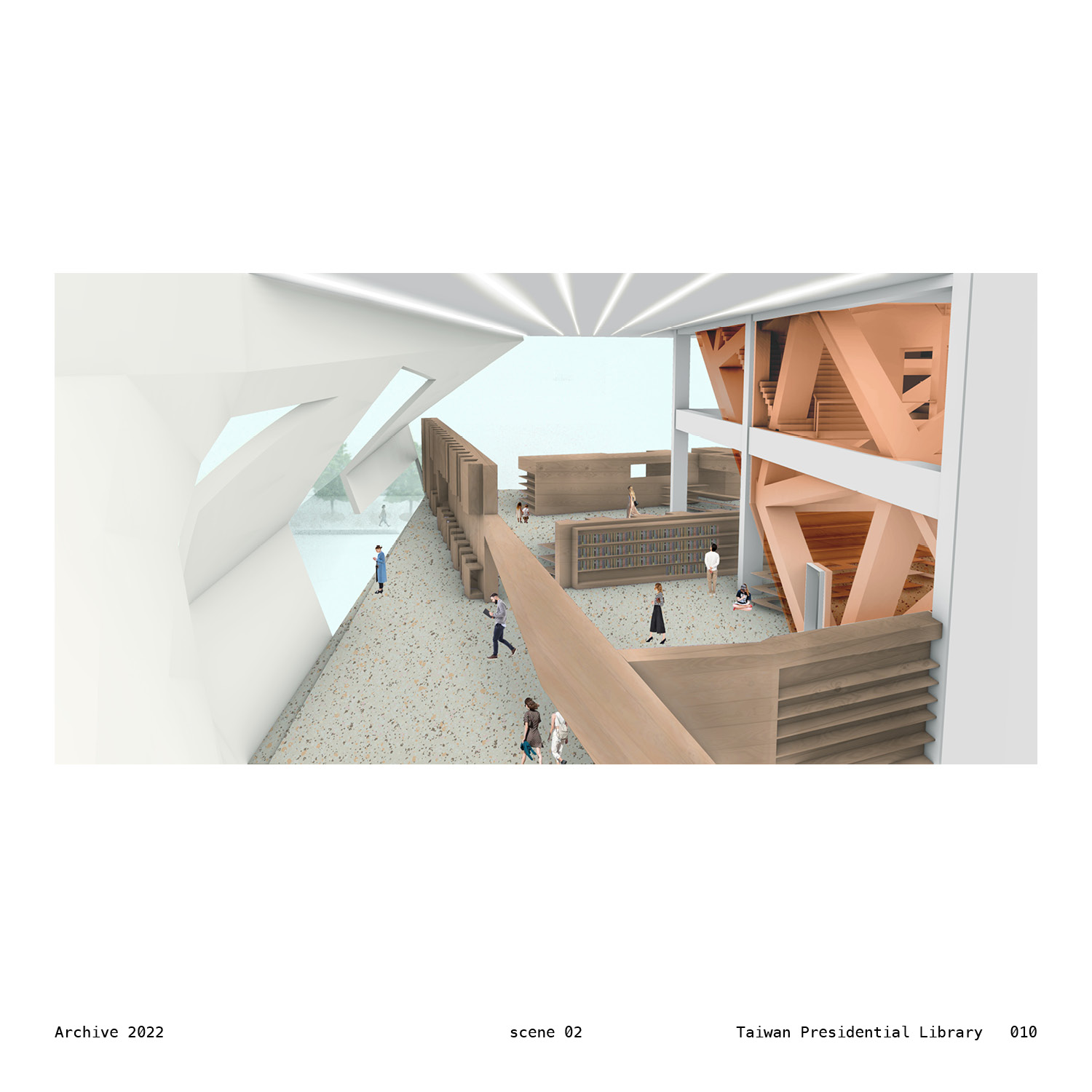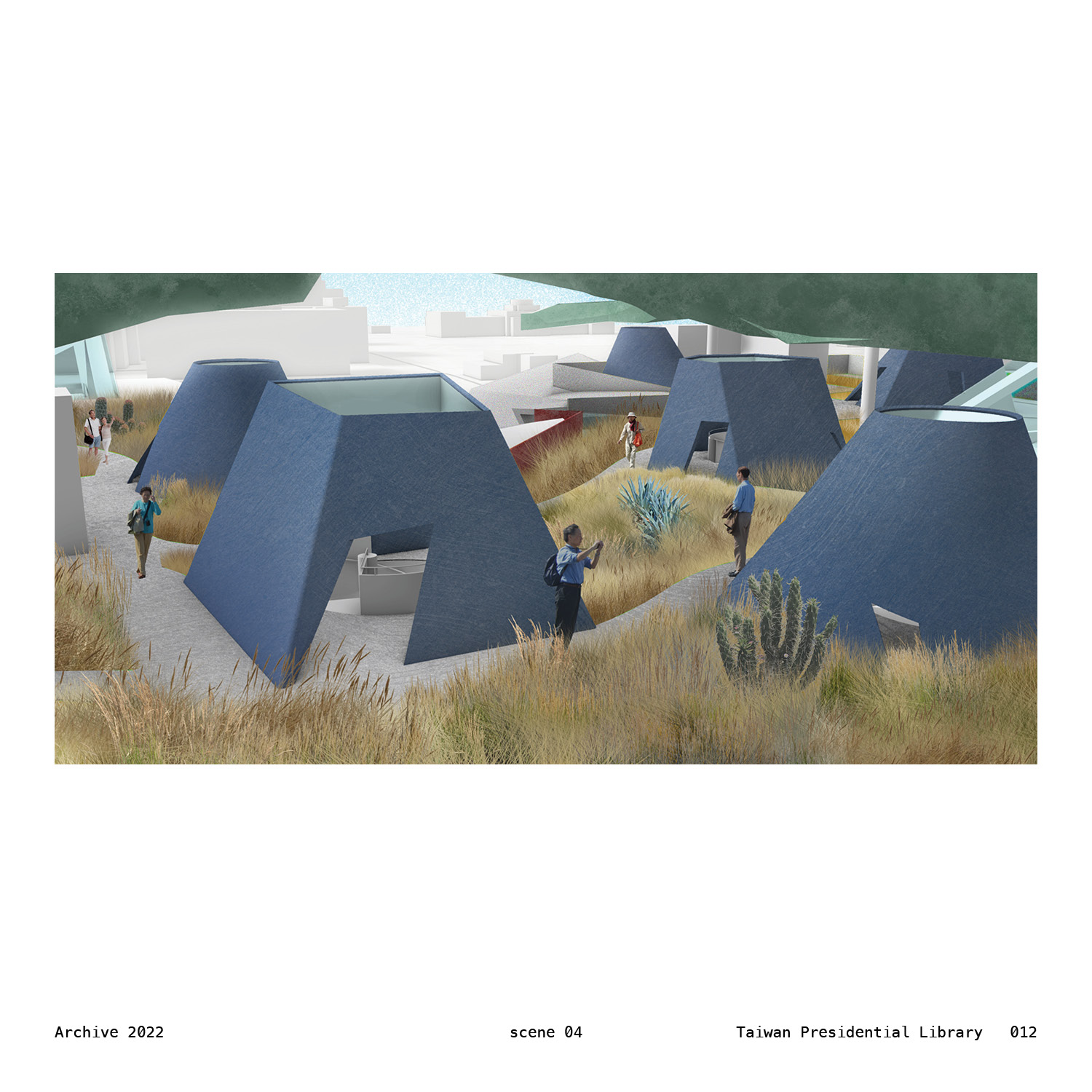The Presidential Library
Right at the endpoint of the Ketagalan Boulevard--the artery of democracy that leads directly to the Presidential Office of the country--the people deserve their last parcel of vocal land of freedom. The landscape on the ground level is the mapping of Keelung River--the mother river on which the city of Taipei nurtured and prospers. Upon this piece of common ground gathers the vociferous citizens with their dynamic prospects toward the future of the nation. The “river”, the blue concrete way running all the way through the landscape, alludes to the tradition of the culture in which people will sit in line on the sides of a crystal brook, expressing their notion and vision of a topic alongside the flow of the water -- the democratic container of thoughts. The symphony of diverse advocate is here to be composed.
The civilization nourished by the river is stacked as collective memories upon. The tilted circulation core acts as the wormhole through which visitors travel between keystones in history that had significant influence upon this Midtown Area and the city beyond. Starting with the level raised nine meters above ground, the urban fabric in the Ching Dynasty formed through administrative clusters within the castle wall is translated into bookshelves, nooks, and partitions within this level composed mainly of a library, a restaurant and a flexible event space that are all opened to the public. The grid of a more contemporary planning of the city in the Japanese colonial informs the floor pattern and specific space within the open office on the administration level. This level hovers over the public space below in the form of a U-shape bar.
Finally, one arrives at the top as a detached reader of a piece of history. Here stories rewind, reminding us of the hard-fought democracy and the precious but delicate status of peace and freedom. Within this landscaped garden, or the primitive heathland, visitors find ways back to the past. Through the doorways and spirals down the stair, one arrives at the reproduced study of one of the former presidents. People come with different reasons and their point of view, while the history is here to be reread and re-felt through dialogue, with the disturbance of the outside world temporarily left behind.
On top of everything, one should never forget the omnipresent land that have accompanied and bought us to where we are today. The ragged form of the roof outlines the silhouette of the hills that surrounds the basin which defines the now locus of city of Taipei. The land is our origin and our home, under which the memories of history will at last be buried eternally.
The presidential library is a piece of floating cloud. It humbly reflects and displays the color palette of its surroundings. It stores the dynamic collective memories of the nation without preconception. It provides shade while sparing the land of freedom below for its people. It will always be there, as the cloud of people, and as the collective memory of history of the island.



